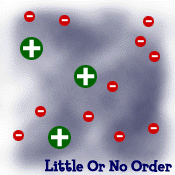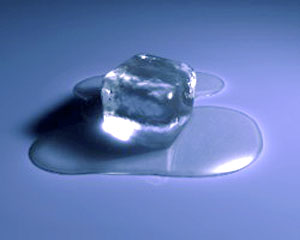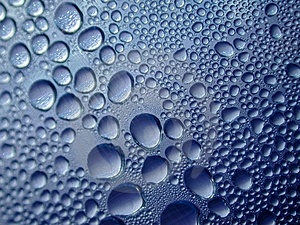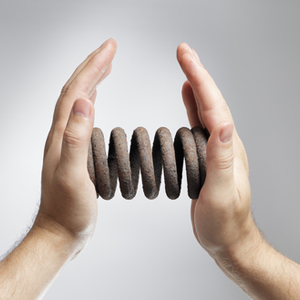Pretest - States Of Matter

Understanding matter has states. Just not these 50.
- 1.
What state of matter is water?
- A.
Solid
- B.
Liquid
- C.
Gas
- D.
All of the above
Correct Answer
D. All of the aboveExplanation
Water can exist in all three states of matter: solid, liquid, and gas. At low temperatures, water freezes and becomes a solid (ice). At room temperature, water is a liquid, and at high temperatures, it boils and turns into a gas (water vapor). This is due to the unique properties of water molecules and the changes in their arrangement and movement as temperature and pressure change. Therefore, water can be found in all three states, making "all of the above" the correct answer.Rate this question:
-
- 2.
1. How many fundamental/main states of matter exist?
- A.
1
- B.
2
- C.
3
- D.
4
- E.
5
Correct Answer
D. 4Explanation
solid, liquid, gas, plasmaRate this question:
-
- 3.
What state of matter are the particles really close together?
- A.
Solid
- B.
Liquid
- C.
Gas
- D.
Plasma
Correct Answer
A. SolidExplanation
In a solid state of matter, the particles are tightly packed and closely bonded to each other. This results in a fixed shape and volume for solids. The strong intermolecular forces between the particles prevent them from moving freely, causing them to vibrate in place. Therefore, the particles in a solid state are indeed really close together compared to particles in other states of matter such as liquids, gases, or plasmas.Rate this question:
-
- 4.
What state of matter are the particles in this picture?
- A.
Solid
- B.
Liquid
- C.
Gas
- D.
Plasma
Correct Answer
C. GasExplanation
The particles in the picture are in a gaseous state because they are spread out and not tightly packed together. In a gas, the particles have enough energy to move freely and independently of each other.Rate this question:
-
- 5.
What state of matter are the particles in this picture?
- A.
Solid
- B.
Liquid
- C.
Gas
- D.
Plasma
Correct Answer
D. PlasmaExplanation
Plasma is a charged gas. The charges in the picture indicate charged atomsRate this question:
-
- 6.
What states of matter have no shape and no volume?
- A.
Solid
- B.
Liquid
- C.
Gas
- D.
Plasma
Correct Answer(s)
C. Gas
D. PlasmaExplanation
SOLIDS have a definite shape and volume
LIQUIDS have a definite volume but the shape comes from the container they are in
GAS has no definite shape or volume
PLASMA has no shape or volumeRate this question:
-
- 7.
What are the order of states when something melts?
- A.
Solid to liquid
- B.
Liquid to solid
- C.
Liquid to gas
- D.
Gas to liquid
Correct Answer
A. Solid to liquidExplanation
When something melts, it undergoes a phase change from a solid state to a liquid state. This occurs when the substance absorbs enough heat energy to break the intermolecular forces holding its particles together in a rigid structure. As a result, the particles gain enough kinetic energy to move more freely, causing the substance to change from a solid to a liquid.Rate this question:
-
- 8.
Find the change that shows the states that go from gas to liquid.
- A.
Boiling
- B.
Evaporation
- C.
Condensation
- D.
Sublimation
Correct Answer
C. CondensationExplanation
Condensation is the process in which a gas changes into a liquid state. During condensation, the gas molecules lose energy and come together to form liquid droplets. This change occurs when the temperature of the gas decreases or when the gas comes into contact with a cooler surface. Therefore, condensation is the correct answer as it represents the change from gas to liquid.Rate this question:
-
- 9.
What state of matter can you compress?
- A.
Solid
- B.
Liquid
- C.
Gas
- D.
Plasma
Correct Answer
C. GasExplanation
Compressing a gas means you are making the distance between the gas particles shorter. This means compressing the gas decreases the gases volumeRate this question:
-
- 10.
What state is water vapor?
- A.
Solid
- B.
Liquid
- C.
Gas
- D.
All of the above
Correct Answer
C. GasExplanation
Water vapor is the gaseous form of water. When water is heated, it undergoes a phase change from liquid to gas, and this gaseous form is known as water vapor. It is invisible to the naked eye and is lighter than air. Water vapor is constantly present in the Earth's atmosphere and plays a crucial role in the water cycle and weather patterns.Rate this question:
-
- 11.
Which states of matter have lots of space between their particles?
- A.
Solid
- B.
Liquid
- C.
Gas
- D.
Plasma
Correct Answer(s)
C. Gas
D. PlasmaExplanation
Plasma is ionized gas, so there is lots of space between those gas particlesRate this question:
-
Quiz Review Timeline +
Our quizzes are rigorously reviewed, monitored and continuously updated by our expert board to maintain accuracy, relevance, and timeliness.
-
Current Version
-
Mar 21, 2023Quiz Edited by
ProProfs Editorial Team -
Aug 14, 2015Quiz Created by
Kyle Pearson
- Atom Quizzes
- Atomic Theory Quizzes
- Chemical Bonding Quizzes
- Chemical Compound Quizzes
- Chemical Element Quizzes
- Chemical Reaction Quizzes
- Chemistry Practice Quizzes
- Clinical Chemistry Quizzes
- Electrolysis Quizzes
- Functional Group Quizzes
- Gas Quizzes
- General Chemistry Quizzes
- IBSL Chemistry Quizzes
- Medicinal Chemistry Quizzes
- Reaction Quizzes
- Soap Quizzes
- Solution And Mixture Quizzes
 Back to top
Back to top








